
Christmas Celebrations in Palma de Mallorca
Get into the festive spirit at Palma's annual Christmas Fair.
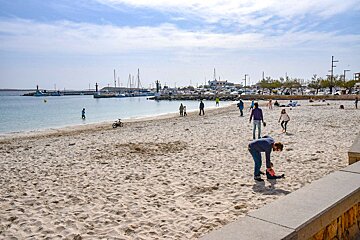
© J. Rains
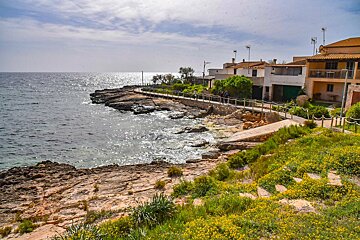
© J. Rains
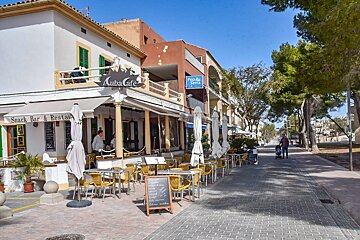
© J. Rains

© J. Rains
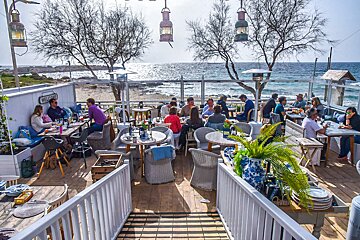
© J. Rains
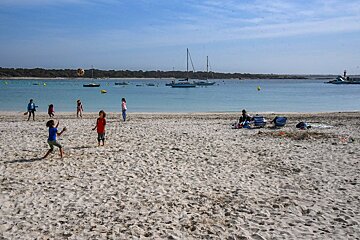
© J. Rains
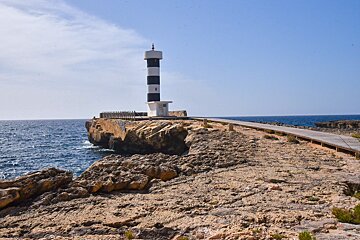
© J. Rains
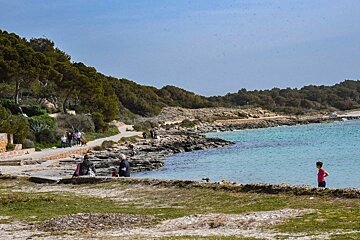
© J. Rains
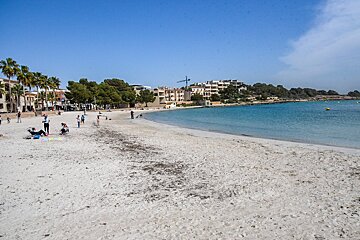
© J. Rains
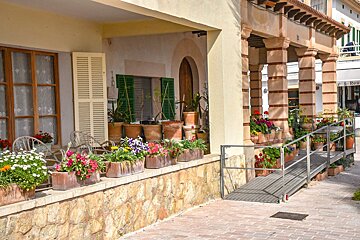
© J. Rains
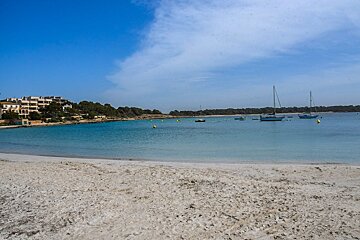
© J. Rains
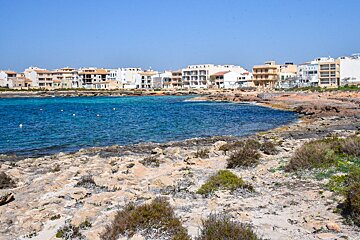
© J. Rains

© J. Rains
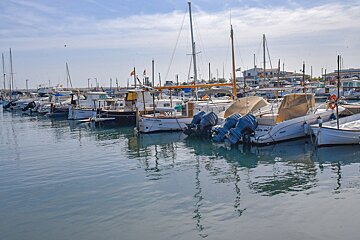
© J. Rains

© J. Rains
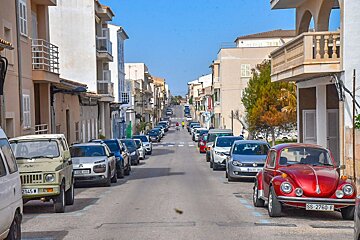
© J. Rains
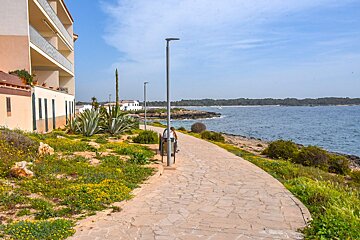
© J. Rains

© J. Rains
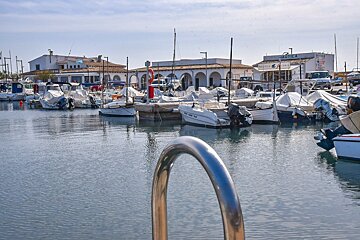
© J. Rains
Beach resort in the south-east with some of the most magnificent beaches in Mallorca
Colonia de Sant Jordi is a small, vibrant resort town located on the southeastern coast of Mallorca, near the famous Es Trenc beach.
Sometimes referred to as 'Port de Campos' (named after Campos, which is the main town of the Ses Salines region), Colonia de Sant Jordi was once a small fishing harbour but the outstanding beaches on its coastline have made tourism thrive here in recent years. This part of the island is well known for its extraction of salt and the famous Es Trenc beach, an unspoilt stretch of sand commonly found on postcards due to its almost-white sands and shallow turquoise waters.
In the town itself, the old fishing harbour still remains intact, and adds an element of charm and beauty to the place. Like many of the seaside resorts in Mallorca, there is a bustling atmosphere in the summer here, while it remains peaceful in the winter. The promenade is the life and soul of Colonia de Sant Jordi as it claims a whole host of restaurants and bars stretching from the port and past the beach. Some are seasonal but you will find people sitting in restaurants lapping up the sunshine throughout the day and into the evenings year-round.
Colonia Sant Jordi hosts various traditional fiestas throughout the year.
The most notable is held in honour of its patron saint, Sant Jordi (Saint George) on 23 April, although tourists tend to get more involved in the town’s summer festival which is held on the first weekend of August.
Down the road in Ses Salines, they celebrate a Salt Festival in the summer while international athletes flock to Colonia Sant Jordi for its Olympic distance triathlon at the beginning of May each year.
The local market selling fresh fruit, vegetables and souvenirs takes place in Colonia Sant Jordi on Wednesday mornings. Fear not if you miss it as there are plenty of markets held in the surrounding villages throughout the week. The region's main town, Campos, has two markets per week (on Thursday and Saturday mornings), while Ses Salines holds a market every Thursday.

Get into the festive spirit at Palma's annual Christmas Fair.

The German community in Santa Ponsa celebrate their very own 'Weihnachtsmarkt' every year at the Polígono Son Bugadellas.

The Puerto Portals Christmas Market is one of the most popular in Mallorca and it will be open until January.

The charming Pueblo Español, a reconstructed Spanish village near the centre of Palma, turns into an outdoor market at the beginning of December.

A spectacular Christmas show, a festive market, ice skating and more at Mallorca's legendary entertainment venue.

Jazz Voyeur Festival, established as the point of reference for high-quality jazz music in the Balearic Islands thanks to its remarkable track record, presents an artistic line-up that once again manages to bring great national and international artists to Mallorca.
The area shows traces of prehistoric life from the Talaiotic culture between 1300 and 800 BC, with stone towers and other remains still visible today. Under Roman rule the coastline became important for navigation and settlement, with evidence of farming and the likely exploitation of the nearby salt flats at Ses Salines.
During Moorish times the salt trade continued and after the conquest of Mallorca by King Jaume I of Aragon the land was divided among Catalan nobles and used largely for fishing, grazing and salt production.
The modern town only emerged in the late 19th century when it began as a modest fishing settlement. The name ‘colonia’ reflects the community of workers who lived here and earned their living from fishing and salt harvesting. With time Colònia de Sant Jordi grew and transformed, especially with the rise of tourism drawn by its beaches and the nearby Cabrera Islands.
Alongside tourism, harvesting gourmet sea salt is the town's main activity. Ses Salines d’es Trenc, founded in 1958 on the road from Campos to Colonia de Sant Jordi, has created quite a name for itself thanks to its luxury 'Flor de Sal'. More than 10,000 tonnes of this precious mineral are harvested from the man-made salt lakes using traditional methods every year. Both Colonia de Sant Jordi and the neighbouring town of Ses Salines carry a symbol in their town's coat of arms in honour of this salt.
The salt lakes of Ses Salines d’es Trenc are certainly worth seeing. There’s a lovely shop on site selling all different types of salts in various flavours although lots of shops in this part of the island sell the famous Flor de Sal, which is the perfect memento of Mallorca to take back home for yourself or friends.
Colonia de Sant Jordi is a hub for boats running to the National Maritime Park of Cabrera, an archipelago of islands about 10km south from the coast. From the town, on a clear day, you can enjoy views all the way to the Cabrera Archipelago, so do keep your eyes peeled.
This part of southeast Mallorca has some of the most magnificent and unspoilt beaches on the island, and people travel from far and wide to set their eyes on their almost white sands and turquoise waters. In addition to the town's small beach, Platija d’Es Port, there are plenty of sandy beaches a short walk to the east – the further you go, the better the beaches become. A 20-minute walk will take you to one of the island's best, Es Carbo, which is where the Spanish Royal family like to spend time. Further east you will find Ses Roquetes followed by Es Caragol, both of which are sheltered coves, highly popular amongst sun worshippers.
To the west lies the more accessible and better known Es Trenc beach, a 3km long stretch of sand met with shallow turquoise waters (bear in mind that you might come across nudist sunbathers). In the summer months, the horizon is filled with luxury yachts making the most of the crystalline waters. There are limited sun-loungers and there is very little shade on the beach so, either arrive early in peak summertime or bring your own parasol. It’s also worth noting there are various car parks servicing the beach – follow the signposts.
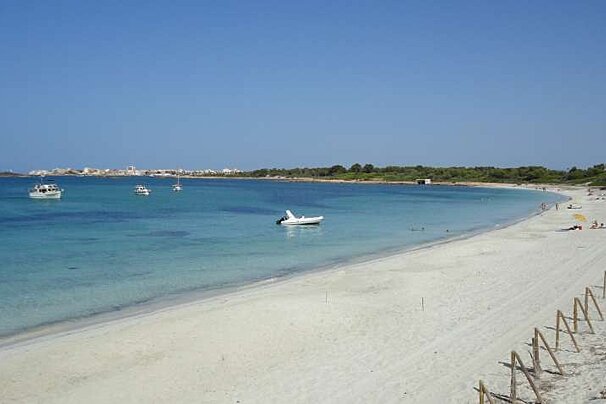
If you are looking for a beach where you can get away from it all, then Es Carbo may be the one for you. A 30 minute walk east from Colonia St Jordi in the south of Mallorca, it is a vast stretch of white sand that sits in a protected bay.
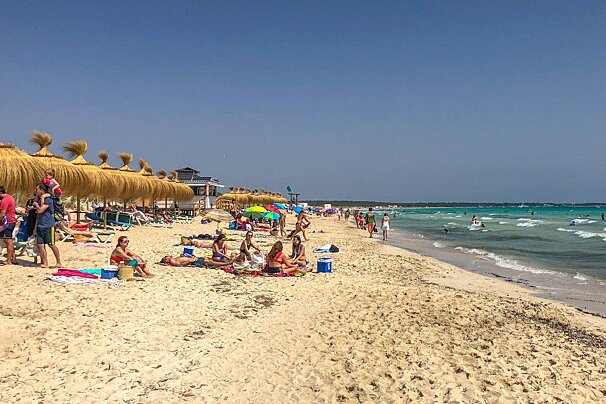
Unassigned to any of the island’s numerous holiday resorts, the stunning beach of Es Trenc is geographically fairly isolated with a wonderful wild and natural feel. With 2km of bleached white sand and transparent water, it's often referred to as more Caribbean than Mediterranean in characteristics.

Also known as Platja de Sa Ràpita, an alternative to Es Trenc is the beautiful neighbouring beach at S’Arenal de sa Rapita in the southeast of Majorca. It is much quieter than Es Trenc, and is popular with families, surfers and windsurfers.
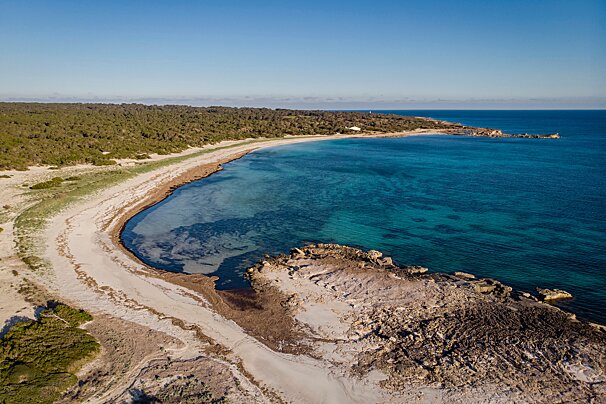
Found on the west side of Mallorca’s most southern tip, Es Caragol is wonderful if you enjoy sunbathing somewhere a little more remote than your usual tourist spot.

Es Racó de S'Arena offers a complete escape from the bustle of tourists and is great for exploring or walking. If you're lucky, you could find yourself completely alone here. Even when there are other people, there is enough space to carve out an area which feels private.

With beautiful views and crystal clear water it's a great place for swimming and snorkelling. Picturesque and quiet, it's no surprise that it's popular with the locals.
Colonia de Sant Jordi is a town for food lovers. It might be a small resort but there are some fashionable restaurants with great food offerings. Seafood and tapas are some of the staples but you can find good quality Italian eateries alongside popular international cuisines too. Located along the local beach and around to the port, along Carrer Gabriel Roca, there are many bars and restaurants with fantastic views across the bay.
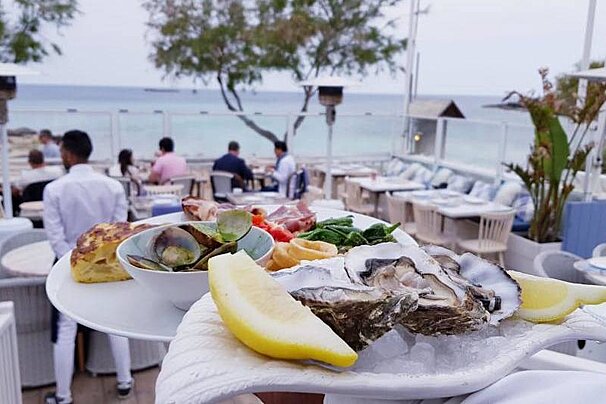
Located in the heart of Colonia de Sant Jordi, this restaurant serves local cuisine right in front of the Mediterranean sea with views over the island of Cabrera.
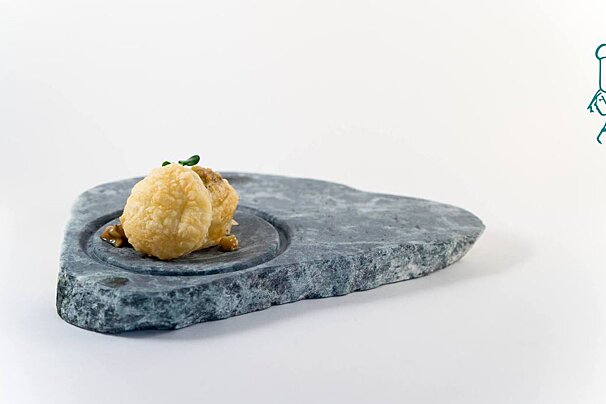
The chef, Marta Rosselló, won the Spanish equivalent of Masterchef back in 2014 and her food speaks volumes about her talents.
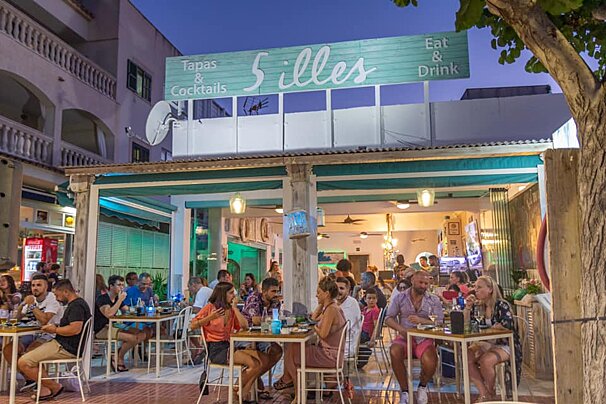
A well-liked place for tapas and jam-jar cocktails, this restaurant is located in front of the Salinas de S'Avall salt lakes.
Most of Colonia de Sant Jordi’s bars are located along Carrer de Gabriel Roca. You'll easy find somewhere to sip a fruity cocktail overlooking the beach or up on a roof terrace. A few bars that are open late night but, for a big night out, head to the nearby resort of Cala d’Or.
The coast around Colonia Sant Jordi is embellished with beaches claimed to be the most spectacular in Mallorca. However, there’s so much more to do here than lay on the beach all day, in fact, outdoor enthusiasts enjoy this area year-round. Head to the water for boat trips over to Cabrera, here you can snorkel or kayak amongst the protected ecosystems of the waters below.
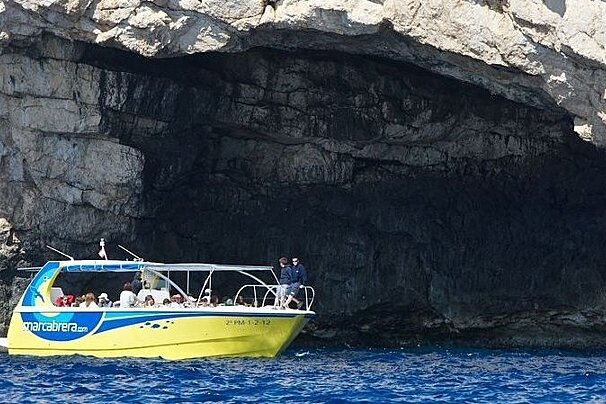
Explore the Island by sea and admire the remarkable views!

Boat trip to the Natural Park of Cabrera, just 30 minutes from the coast of Mallorca.
The area is popular amongst cyclists. Due to its unrivalled location, it is possible to take an array of routes from Colonia de Sant Jordi travelling all across the island. Many of the hotels in the area also proudly cater for cyclists and their bikes.

22km point to point but a longer day out at 44km if you do the return journey by bike instead of catching the bus.
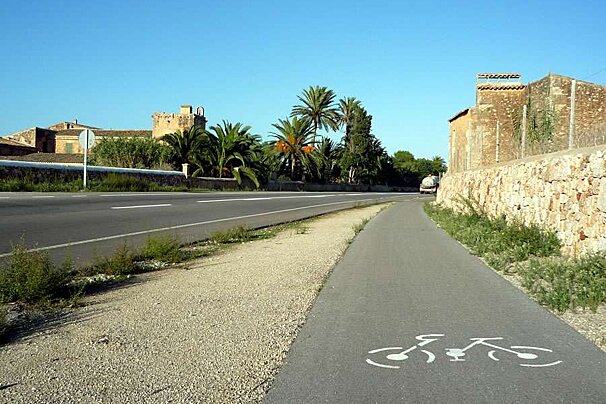
A flat road cycle but at a distance of 60km this could be a long ride for a beginner so be prepared!
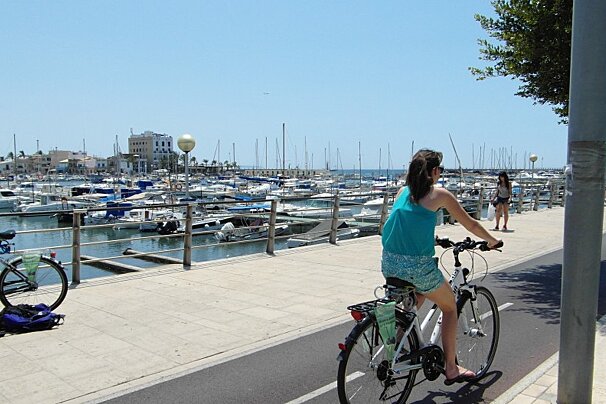
On Saturday we hired bikes and set off on a hot afternoon to explore the beaches of Palma Bay. A shoreline cycle path runs from the northern end of Palma docks all the way to the resort S’Arenal in the south.

Enjoy a flat route by the sea that is completely on purpose made cycle paths so that it is safe for all the family to cycle. It takes you from the capital city of Palma to the beach resort area of Playa de Palma.
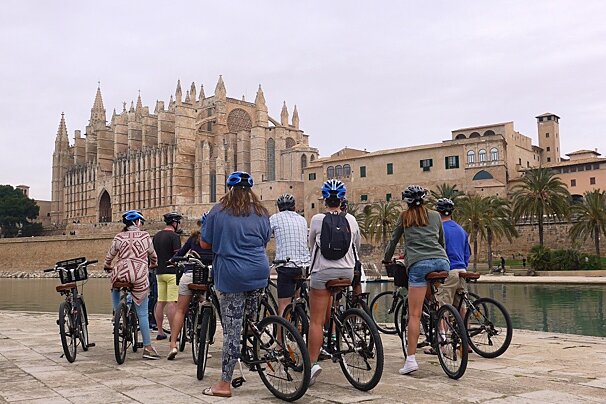
Palma is a really bike friendly city. The giveaway is the prominent red cycle route running all along the Paseo Maritimo and through the city centre. The weather is perfect for it too. Despite the obvious benefits of urban exploration on two wheels, Palma on Bike was my first experience of cycling in the capital.

A nice quiet route, if you stay away from the main roads and enjoy these resorts in a more laid back fashion.
There are some splendid walks along the coast around Colonia de Sant Jordi. The hike to the lighthouse of Cap de Ses Salines offers tremendous views across the bay and over to Cabrera Island. The bewitching beaches of Es Caragol, Es Carbo and Es Dolç are dotted along this popular 12km route that ends at the lighthouse.

Ses Salines is located on the south-east coast of Mallorca. This is a summer walk which you can start from Ses Salines itself, or at the beach resort of Colonia de Sant Jordi.

Felanitx is located in the south-east of Mallorca.
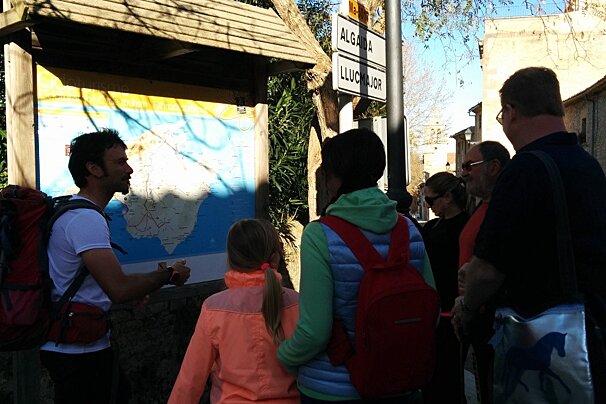
Good Friday is often a great opportunity for a spring time walk, especially in Mallorca where there was not a single cloud in the sky and temperatures were in the mid 20s.

Algaida is located towards the middle of the island, about 15 km east of Palma. This hike can start from the town of Algaida, walking towards Castellitx, where there is a beautiful hermitage, the "Ermita de la Pau" that is well worth visiting, and then on to Aubella, where the climb to Cura starts.
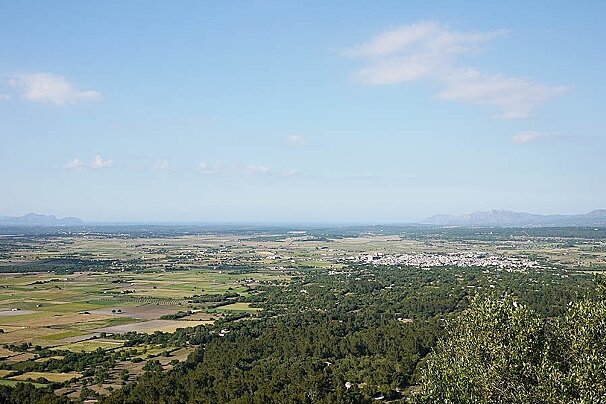
Petra is located towards the middle of the island, about 8km west of Manacor. The walk up to the hermitage starts in Petra, following the paved road and involves a walk of a little over an hour, you can also get there by a trail going up from Vilafranca.

Once again, using my trusted hiking book ‘Mallorca, the finest coastal and Mountain walks’ by Rolf Goetz, I found a wonderful coastal hike from Portals Vells to Cala Figuera Lighthouse. A lovely, short and relatively easy hike makes it a contender for the best year-round walk in Mallorca.

Coasteering combines adventure swimming, abseiling, climbing and rock scrambling to explore some incredible locations in Mallorca.

PADI International certifications are recognised all over the world. This school offers a number of courses for you to learn new skills and progress.

Explore one of the most spectacular caves on the island in a unique corner where very few are lucky enough to know about.
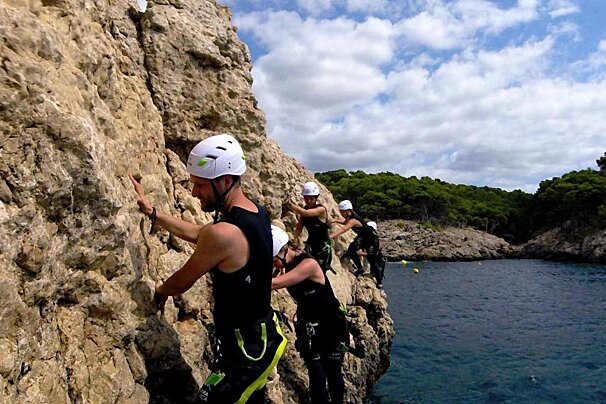
An exhilarating rock and water activity suitable for families and adrenaline-junkies, a great way to explore the coastline of Mallorca.
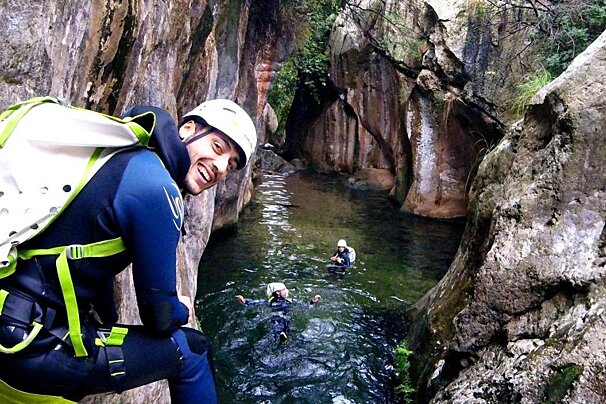
Enjoy an exhilarating day trekking and scrambling through gorges, waterfalls and jumping into giant rock pools.

Lessons delivered at your villa pool by qualified, insured and highly experienced instructors.
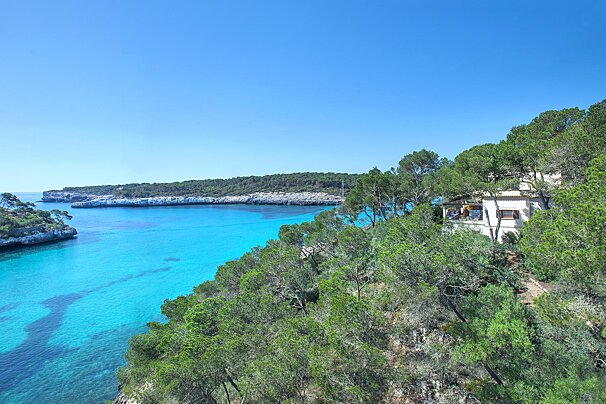
From such a privileged position, snuggled between two of Mallorca’s most esteemed sandy coves (Cala Mondragó and Cala S’Amarador), this resplendent country home is immersed in the pure, natural setting of the legendary Mondragó National Park, abundant in local fauna and shady pine trees that provide a welcomed respite from the midday sun.
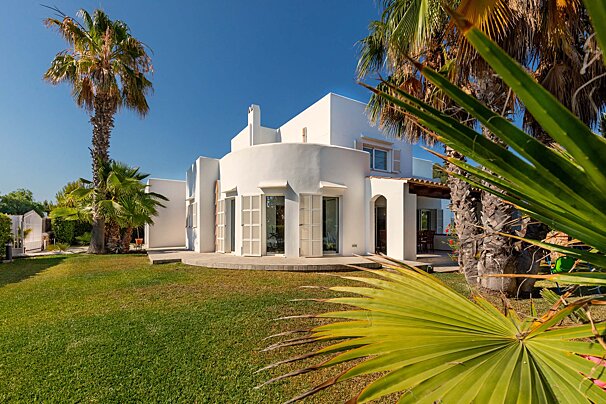
This villa is situated in a quiet residential area in Sa Punta des Port, a part of Cala D'Or. The rocky cove Cala Llamp is 500m. away and about 10 minutes walk you will reach the small the sandy beach Cala Egos and Cala Egos centre that offers shops, restaurants, bars and cafes.

Perched along the craggy coastline of Cala Egos, this recently renovated home is light, bright and airy in true Mediterranean style.

The Villa Magdala is a spectacular three bedroom sea front villa, completely restored with a contemporary look and fresh style. Located in in Cala Egos area-Cala D’Or. A quiet water front position benefiting from amazing sea views. The beautiful sandy cove of Cala Egos is a mere 400 metres away and the Cala Egos centre is a short 500 metres away.

Villa Bassa is a wonderful rustic country villa, sleeping up to 10 people near the popular resort of Cala D’Or, Mallorca. It is only a short distance from beaches, restaurants and shops in Cala d’Or. This property offers a spectacular outdoor area with a luscious lawn, outdoor shower, large dining area and a gated pool; ideal for families with young children.
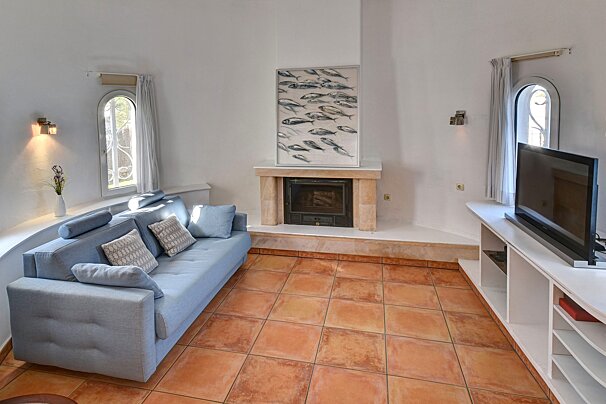
This 3 bedroom villa with private pool and homely garden is located in a quiet road, only 500m to Cala d’Or marina.As you enter the hall, there is access to the open plan kitchen with dinner counter and living room that has access to the covered terrace and garden.
In Colònia de Sant Jordi short-term rentals let you live like a local and enjoy the town at your own pace. You might choose a simple apartment in the centre, where mornings begin with a walk to the bakery before heading to the marina or the market. Families often prefer townhouses or villas with terraces and pools giving space for long outdoor meals and lazy afternoons after swimming at Es Trenc. Couples can find cosy flats close to Es Dolç beach where sunsets paint the sky and the walk home is barefoot along the sand.
For longer stays there are modern penthouses and duplexes with sea views that feel more like a second home than a holiday let. Whatever your style these rentals place you within easy reach of beaches and cafés and let you experience Colònia de Sant Jordi not as a tourist but as part of its gentle rhythm.
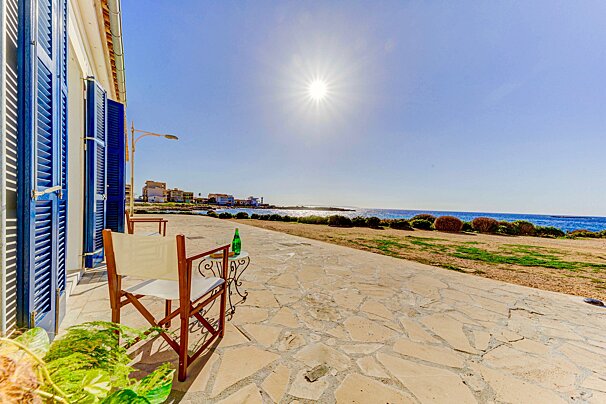
“Migjorn Playa” is a brand new, exciting ground floor apartment located right on the seafront, just a couple of steps away from the idyllic sandy beach of Cala Galiota in Colonia San Jordi.
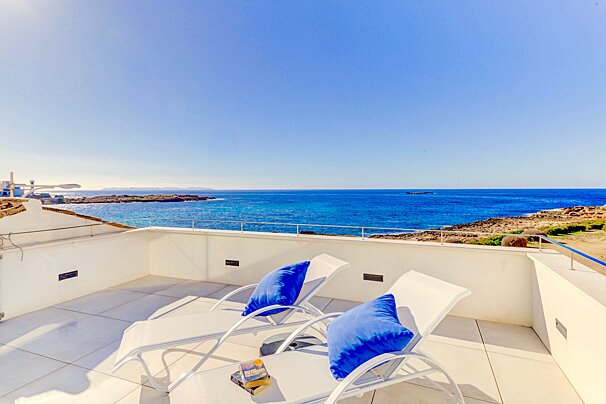
“Migjorn Cel” is a superb 2-storey apartment enjoying an unbeatable location right on the waterfront, just steps away from the sandy beach of Cala Galiota and the jetty with regular departures to the island of Cabrera as well as close to the famous beach of Es Trenc. Sleeping up to 4 guests in 2 spacious bedrooms, this apartment offers brand new interiors (with all the comforts) together with the unique bonus of a truly waterfront location: you will feel like you can touch the sea from your balcony! With all the necessary amenities within a short walking distance, a car is not essential.
Those who want to be close to the sea can stay in modern beachfront properties with spas, pools and rooftop terraces that look out over the Mediterranean. Travellers with a more active streak will enjoy four-star stays that cater for cyclists and tennis players as well as offering guided walks in spring.
Many of these places balance sport with relaxation by providing beauty treatments and massages and they often pair fine dining with an impressive wine list. If you prefer quiet countryside retreats there are traditional rural hotels tucked away among fields where you can borrow a bike to explore the area or simply unwind in peace. For a romantic escape you might choose a luxurious hideaway with natural thermal springs set just outside town.

This hotel is ideally located in Colonia de Sant Jordi, a former fishing port in the southeast of the island. The hotel is just 10 minutes from Colonia de Sant Jordi city centre and has beautiful views of the nearby beaches.

The hotel is located only 100 m away from a beautiful beach, in front of the salt lakes. These salt lakes are in a protected nature reserve area and told to be the second oldest of the world.
Car hire is a viable option in Mallorca and Colonia de Sant Jordi is a 40 minute drive from Palma airport. Or take the worry out of getting from the airport and book a transfer.
There are no direct public buses running from Palma Airport to Colonia de Sant Jordi.

Experience luxury and convenience with this company. Arrive at your yacht charter, sunset tour or boat trip in unparalleled style in a Rolls Royce Ghost.

The established company have been offering a reliable, reasonably priced, private transfer service in Mallorca since 1993.
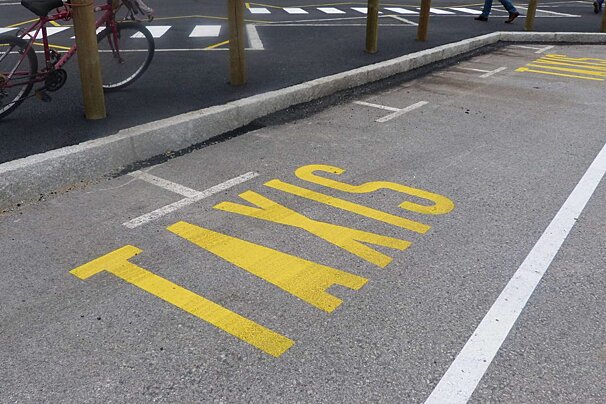
A group of taxi drivers with many years of experience in the sector of airport transfers in Mallorca. You can book online in advance or call to book last-minute.

This taxi & transfer company operates out of Palma, covering the whole of Mallorca Island.

With offices in Alcudia and the airport, Majorca Airport Transfers has a large fleet of taxis, minibuses and coaches to suit all group sizes.

Multilingual company offering transfers from the airport to your destination.
Find out all about what is happening in Mallorca and how to make the most of your time here. The latest news, reviews of fun activities, fabulous beaches, current events and the trendiest restaurants, as well as interviews with leading locals, insider's guides and our top choices for things to do, see, and experience on the island.
See allLatest News & ReviewsThe island hosts all sorts of events, including agricultural fairs in the spring and autumn, live music and DJs in the summer, religious fiestas and international sporting events. Some of the most popular are the Mallorca 312 cycling race in April, the Copa del Rey sailing regatta in July and the Moors vs Christians mock battle in September.
See allUpcoming Events